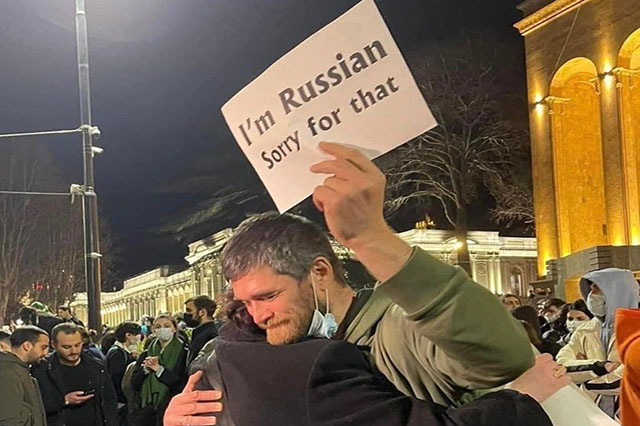Russia invaded Ukraine early on February 24, sparking the worst conflict in Europe in decades.
We look back at six months of war that have killed tens of thousands of civilians.
Invasion
Russian President Vladimir Putin announces on February 24, 2022 a “special military operation” to protect the Russian-speaking self-declared separatist republics of Lugansk and Donetsk in the east, whose independence he has just recognised.
He says he wants to “de-Nazify” Ukraine, a former Soviet state, and demands a guarantee it will never join NATO.
A full-scale invasion starts with air and missile strikes on several cities. Ukrainian President Volodymyr Zelensky pledges to stay in Kyiv to lead the resistance.
The European Union announces for the first time deliveries of arms to Ukraine. The West imposes unprecedented sanctions on Russia, which are toughened over time.
Kherson falls
Russian troops attack Ukraine’s south coast, seizing most of the strategic region of Kherson, crucial for agriculture, and important due to its proximity to the Russian-annexed Crimean peninsula.
On March 3, Kherson, the eponymous capital, becomes the first southern city to fall.
Kyiv resists
Russian troops seek to surround the capital Kyiv and to take Ukraine’s second city Kharkiv in the northeast of the country but come up against resistance.
A month into fighting, Russia withdraws from northern Ukraine, announcing it will focus on conquering the eastern industrial Donbas region, partly held by separatists, along with the south.
On April 2 and 3, the corpses of dozens of civilians are found scattered on the street or buried in shallow graves in the Kyiv suburb of Bucha, which Russian forces had occupied.
The International Criminal Court opens a probe.
Mariupol conquered
Russia besieges the strategic southeastern port city of Mariupol from the start of its invasion.
Russia declares on May 21 that it is in full control of the city, after Ukraine orders troops holding out for weeks in the Azovstal steelworks to lay down their arms.
Nearly 2 500 soldiers surrender and are taken prisoner by Russia.
Kyiv says Mariupol is 90-percent destroyed and that at least 20,000 people have been killed there. The EU denounces “a major war crime”.
Grain blockade
Kyiv and Moscow on July 22 sign a UN-Turkey mediated deal in Istanbul to resume grain exports in a bid to relieve a global food crisis caused by Russia’s blockade of Ukraine’s ports.
The first official shipment of grain since the invasion leaves the port of Odessa on August 1 with 26,000 tonnes of maize.
Ukraine, one of the world’s biggest grain exporters, has some 20 million tonnes of grain built up in its silos.
Gas war
The West accuses Moscow of using energy as a weapon of war in retaliation for massive sanctions imposed after the invasion.
Vital exports of Russian gas to Europe, particularly to Germany and Italy, are slashed again and again, while Gazprom has also suspended deliveries to several European customers refusing to pay in rubles.
Battle for Donbas
On July 3, Russian forces say they control the eastern region of Lugansk after seizing the twin cities of Lysychansk and Severodonetsk.
Moscow forces are now seeking to conquer Donetsk, the other province of the Donbas.
In the towns and cities under its control, Moscow is carrying out a policy of russification with the introduction of the ruble and the issuing of Russian passports. Referendums are also planned to make the annexation by Russia formal.
Southern counter-offensive
Over recent weeks, Ukrainian forces have been carrying out a counter-offensive in southern Ukraine.
With the help of US and European heavy weaponry, they have retaken dozens of villages and damaged strategic bridges in the Kherson region, Kyiv says.
Unclaimed blasts at a Russian military airbase and military facility in Crimea have led experts to suggest Kyiv might have managed to obtain or develop longer range missiles or carry out sabotage operations.
Nuclear threat
On August 5, Russia and Ukraine accuse each other of shelling the Zaporizhzhia nuclear power plant in southern Ukraine that is under Russian military control, raising the spectre of a nuclear disaster.
The Ukrainian operator of the plant, Europe’s biggest, has accused Russian forces of preparing to link up the plant with the Crimea, damaging its electricity network in the process.
Follow African Insider on Facebook, Twitter and Instagram
Source: AFP
Picture: Getty Images
For more African news, visit Africaninsider.com


